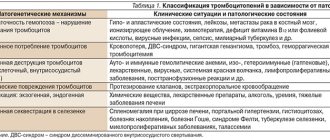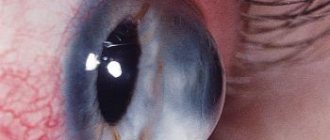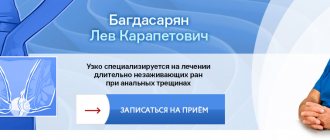Patient complaints can vary from mild malaise and unexpressed chest pain to a fulminant course leading to acute heart failure and sometimes death. Most often, the initial complaints are of the nature of a flu-like syndrome: fever, pain in muscles and joints, sometimes symptoms of damage to the gastrointestinal tract such as gastroenteritis
- chest pain, usually long-term, not associated with physical activity, of various types
- palpitations, almost constant, often interruptions in heart function, various arrhythmias
- shortness of breath, decreased exercise tolerance
- weakness, which may be the leading and almost the only complaint.
Myocarditis
The acute stage of myocarditis requires hospitalization in the cardiology department, limitation of physical activity, strict bed rest for 4 - 8 weeks until circulatory compensation is achieved and normal heart sizes are restored. A diet for myocarditis involves limited consumption of table salt and liquid, enriched protein and fortified foods to normalize metabolic processes in the myocardium.
Myocarditis therapy is carried out simultaneously in four directions, providing etiological, pathogenetic, metabolic symptomatic treatment. Etiological treatment is aimed at suppressing the infectious process in the body. Treatment of bacterial infections is carried out with antibiotics after isolation and determination of the sensitivity of the pathogenic microorganism. For myocarditis of viral origin, the prescription of antiviral drugs is indicated.
A necessary condition for the successful treatment of myocarditis is the identification and sanitation of infectious foci that support the pathological process: tonsillitis, otitis, sinusitis, periodontitis, adnexitis, prostatitis, etc. After sanitization of the foci (surgical or therapeutic), a course of antiviral or antibacterial therapy, microbiological monitoring of cure is necessary .
The pathogenetic therapy of myocarditis includes anti-inflammatory, antihistamine and immunosuppressive drugs. The prescription of non-steroidal anti-inflammatory drugs is carried out individually, with the selection of dosages and duration of treatment; The criterion for withdrawal is the disappearance of laboratory and clinical signs of inflammation in the myocardium. In severe, progressive myocarditis, glucocorticoid hormones are prescribed. Antihistamines help block inflammatory mediators.
To improve the metabolism of the heart muscle in myocarditis, potassium preparations, inosine, vitamins, ATP, and cocarboxylase are used. Symptomatic treatment of myocarditis is aimed at eliminating arrhythmias, arterial hypertension, symptoms of heart failure, and preventing thromboembolism. The duration of treatment for myocarditis is determined by the severity of the disease and the effectiveness of complex therapy and averages about six months, and sometimes longer.
Diagnosis of myocarditis
For diagnostics
of myocardium, instrumental and laboratory methods are used, as well as myocardial biopsy.
Instrumental methods include:
- ECG - rhythm and conduction disturbances may be detected for the first time, sometimes infarction-like changes (especially in the acute phase of inflammation);
- ECHO CG - disturbances in systolic (due to the death of cardiomyocytes) and diastolic (due to swelling of the walls of the left ventricle) myocardial function;
- MRI contrast with gadolinium clearly reveals edema of the heart wall (as one of the stages of inflammation), but can be false negative;
- Myocardial scintigraphy can be informative in cases of suspected sarcoid myocarditis, but in other cases it is not very specific.
Laboratory methods include:
- A clinical blood test that can reveal an increase in ESR, an increase in the number of leukocytes, and in some forms, eosinophils;
- A study of the value of the so-called cardiac-specific enzymes (troponin T and CPK) reveals their increase, but a negative result does not exclude the diagnosis of myocarditis;
- Determination of serum antimyocardial antibodies.
- Routine serological viral testing is not recommended; it may only be useful in diagnosing diphtheria or borreliosis myocarditis
The gold standard for diagnosing myocarditis is endomyocardial myocardial biopsy (EMB), which is performed only in specialized hospitals and according to strict indications. Indications for referral are determined by the attending physician.
Who is at risk
The most common cause of myocarditis is viral pathologies of various origins. Therefore, the risk group includes every person who has had herpes, hepatitis B, C, rubella, chicken pox, measles, diphtheria and even influenza. Since most people have been diagnosed with some kind of viral disease, everyone must undergo a preventive examination in order to exclude the presence of inflammatory processes in the heart. This can subsequently save lives.
The risk of developing myocarditis increases in proportion to the presence of infectious pathologies. Listening to your heart is recommended for everyone who has suffered or is a carrier of diseases caused by the following pathogens:
- Bacteria that provoke the development of tuberculosis, chlamydia, staphylococcus.
- Fungal genus Aspergillus fumigatus and Candida. They cause such common diseases as tonsillitis, laryngitis, otitis media, conjunctivitis, candidiasis, etc.
- Parasitic worms - roundworms, echinococci, trichinella, lamblia, toxocariasis.
- Diabetes mellitus in any degree.
- Thyroid diseases.
- Autoimmune pathologies – rheumatoid arthritis, lupus erythematosus, vasculitis.
The risk group includes people whose professional activities involve working in enterprises with hazardous working conditions, where there is a possibility of heavy metal poisoning. Taking certain medications can cause inflammation of the myocardium. For example, antiallergic cephalosporins or antidepressants have an extremely negative effect on cardiac activity. Social factors play an important role for the myocardium. Abuse of alcoholic beverages, smoking and other dangerous and harmful addictions contribute to the development of myocarditis.
2. Signs and symptoms of the disease
The peculiarity of myocarditis is that the disease is often asymptomatic. And most people recover without knowing they had myocarditis. If symptoms of the disease do exist, they may be as follows:
- Shortness of breath during physical exertion, and subsequently at rest, at night when lying down;
- Abnormal heartbeat, in rare cases leading to fainting;
- Delirium;
- Sharp or stabbing pain in the chest, pressure in the chest that may extend to the neck and shoulders;
- Fatigue;
- Common signs of infection are fever, muscle pain, sore throat, headache;
- Diarrhea;
- Joint pain;
- Swollen joints, swelling of the legs;
- Fluid retention in the body (impaired urination).
If you experience these symptoms, you should contact a good doctor who will examine you and, among other things, check for palpitations, fluid accumulation in the lungs or swelling of the legs - signs that may indicate myocarditis.
Visit our Cardiology page
Myocarditis in the daily practice of a doctor (part 1)
00:00
Oksana Mikhailovna Drapkina , professor:
– Dear colleagues, we continue to work on the air again. In the “Master Class Lecture” section, Academician Vladimir Trofimovich Ivashkin presents a clinical analysis that is dedicated to myocarditis in a young patient.
Vladimir Trofimovich Ivashkin , academician of the Russian Academy of Medical Sciences, Doctor of Medical Sciences:
– After the brilliant lectures that we heard, I think it would be advisable for us to return for a while to the real world in which we all live (I mean the professional world) and talk about non-coronary myocardial pathology. In particular, about myocarditis.
I think we can do this using the example of a young patient who was in our clinic, and then was transferred to the Transplantation Institute to continue treatment.
This patient was admitted to us in October 2010 with complaints of cough with difficult to clear mucous sputum. This cough was noticeably worse when lying down, at night. Disturbed the patient's sleep. Significantly reduced quality of life.
Further, she was bothered by shortness of breath, and it occurred with moderate physical activity. With minimal, I would even say, physical activity.
Massive swelling of the feet and legs was noted. The patient complained of frequent dull pain in the precordial region, palpitations and interruptions in heart function, aching pain in the right knee joint, night sweats and constant severe weakness.
(Slide show).
What happened to our patient before she was admitted in October 2010.
You see, for our patient it all started at the end of February 2008, when she suddenly developed the cough that we talked about. There was severe pain in the chest. The kind of pain that prevented her from moving. The pain intensified with physical activity. The patient was forced to spend all her time in bed - she was in bed for 3 days.
Then shortness of breath appeared and began to increase.
The patient was under the supervision of outpatient doctors all the time.
After some time (after 2 weeks), an echocardiogram was performed on an outpatient basis. A left ventricular ejection fraction of 58% was found.
The patient was investigated for past infections. They suspected that it was an acute respiratory disease. In particular, they tried to find out and investigated the patient’s past infection with herpes simplex virus type I-II, cytomegalovirus. These data were negative.
03:51
After the next 2 weeks, during an outpatient study, the left ventricular ejection fraction was already 49%. An enlargement of the left atrium of up to 7 centimeters was detected. The final size of the left ventricle in diastole increased to 6 centimeters.
During this time, the patient's shortness of breath continued to worsen. Mucopurulent sputum appeared.
It must be said that the patient did not go to the hospital. You will then understand why this happened.
In April, the patient developed a fever. Tachycardia began to increase. Ultimately, she comes to our clinic for the first time with a picture of orthopnea (nocturnal shortness of breath), which prevents the patient from falling asleep, with massive swelling of the feet and legs.
Additional studies revealed a protodiastolic gallop rhythm (threefold rhythm).
Fluid in the pleural cavity on objective examination. The ejection fraction has decreased to 40%. The end-diastolic size increased. The left atrium remained large. Pulmonary artery systolic pressure was high: 50 mmHg. pillar
Regurgitation was clearly detected on the mitral and tricuspid valves by auscultation, which was confirmed by echocardiographic examination to the 3rd degree.
Consequently, we had before us a patient with a clear clinical picture of both left and right heart failure. With swelling of the lower extremities. With low ejection fraction. With dilatation of almost all chambers of the left ventricle, right atrium, left atrium and high pulmonary hypertension.
06:18
(Slide show).
During this period, an electrocardiogram was obtained, which, of course, would have alarmed any doctor. You see (here especially in leads V1, V2, V3) electrical alternans. We see a blockade of the conduction pathways, overload of the left and right parts of the heart.
What attracts attention.
Look, in chest leads V4, V5 and V6 we see a pathological Q wave and ST segment elevation.
Such an electrocardiogram raised the question of the need for a differential diagnosis between myocardial infarction and those non-coronary myocardial diseases that can occur with such severity and severity, clinical and electrocardiographic. In particular, we could be talking about myocarditis.
During an echocardiographic study in May 2008, we see that there is no myocardial hypertrophy. Interventricular septum – 11 mm, posterior wall – 10 mm, end-diastolic size – 65. Ejection fraction – 39%. At the same time, accumulation of fluid in the pleural cavities was visible.
The same study - apical four-chamber position. We see large left and right atria. Simpson ejection fraction – up to 15%. These are very serious indicators against the background, as you already remember, of a clinical picture of congestive heart failure and serious changes in the electrocardiogram.
08:21
Thus, in addition to myocardial infarction, which I talked about, we were talking about a differential diagnosis:
• infectious myocarditis;
• hypersensitive myocarditis;
• giant cell myocarditis;
• cardiac lesions as part of a systemic disease (for example, polyarteritis nodosa);
• acute myocardial infarction.
Since we were talking about the possibility of hypersensitivity myocarditis, we carefully asked the patient what medications she had received before developing this disease.
It was a young patient, absolutely healthy. The only thing this patient took was contraception. Moreover, she took them for a long period: more than 10 years.
The last of the contraceptive drugs that “preceded” her illness was Novynette. A combination drug containing estrogen and estradiol.
The only thing that could be associated with, if we were talking about hypersensitive myocarditis, is with this contraceptive.
If we talk about different types of myocarditis. Assuming infectious myocarditis, we would have to rule out viral, bacterial, or septic etiologies. In autoimmune myocarditis, we would have to find antibodies to the myocardium.
Idiopathic giant cell myocarditis is usually observed in autoimmune diseases.
Acute hypersensitive myocarditis and acute necrotizing myocarditis are myocarditis that develop as a result of sensitization by previous use of certain drugs.
10:30
Monitoring of the patient (you see, a young patient of 35 years old) continues, starting in May.
The patient takes a relatively small amount of medications throughout this time. She was prescribed angiotensin-converting enzyme inhibitors "Diovan", "Carvedilol", "Verospiron", "Lasix" and "Metypred". ").
Of these drugs, she herself chose two for herself, which she took on an outpatient basis, increasing or decreasing their doses herself. It was very difficult to control the intake of these drugs.
She was taking Lasix. Against this background, she was able to reduce the duration and intensity of the cough. On the background of Metipred and Lasix, her shortness of breath decreased, weakness and pain in the right knee joint decreased. Swelling of the legs and feet decreased to a certain extent.
This, naturally, was one of the forms of diagnosis ex juvantibus - such a positive reaction (subjective and objective) to taking Metipred and a diuretic drug.
The temperature remained at low levels. It exceeded 37?C: 37.1?C, 37.2?C, 37.3?C. This continued until February and beyond - throughout 2009. Until October 2010, when she was admitted to our clinic again.
What attracts attention. As a child, the patient often suffered from sore throats. But these frequent outbreaks of tonsillitis, nevertheless, did not lead to the formation of valvular heart disease in the patient. In all likelihood, there was no talk of rheumatic fever.
She is a psychologist by profession. She went on vacation to Turkey several times. She smoked approximately 10 cigarettes a day for the past 5 years.
From family history. My grandmother died at the age of 35. Diagnosis unknown. My aunt has a congenital heart valve pathology. The patient's parents are healthy.
13:20
Rejection of the doctors’ recommendations forced us to organize a meeting between a psychiatrist and our patient in the very first days of her stay in the clinic. The psychiatrist, naturally, did not discover any mental illness, but still noted some character traits.
What are these features?
Anosognosia. The patient was not fully aware of her illness. She did not realize the severity and possible irreversible consequences of her condition.
The patient showed a distorted internal picture of the disease. The patient hoped for a miracle: something would happen that would bring her out of this unpleasant and difficult state.
Finally, low adherence to pharmacotherapy and non-pharmacological measures was identified. In particular, the patient, despite such a serious condition, continued to work. She did not follow the work and rest schedule.
Upon direct examination, a condition of moderate severity was noted. She is asthenic. You see, the mass is 55 kilograms. Height – 168. BMI – 19.5. The patient herself very scrupulously controlled her body weight and did not allow it, as she did.
Cervical lymph nodes that were not fused to the skin were palpated. Swelling of the legs and feet. The jugular veins swelled and pulsated to a level of 2 cm above the collarbone. Positive Plesh symptom.
Percussion above the lungs revealed a clear pulmonary sound up to the level of the 10th intercostal space, and then a dull sound that determined the fluid level. Bilateral hydrothorax.
Respiratory rate – 20. Mild tachypnea. In the lungs, vesicular breathing is harsh or weakened. In the basal regions, soft moist rales were heard on both sides.
Blood pressure is normal. The boundaries of relative cardiac dullness are somewhat shifted - this time to the left. The diameter of relative cardiac dullness is increased to 16 cm.
Rhythmic pulse. The first tone is weakened by auscultation. The protodiastolic gallop rhythm was again auscultated. On auscultation, there was a significant accent of the second tone over the pulmonary artery, which intensified with inspiration.
It must be said that during the examination of the patient, a paradoxical pulse was determined - a decrease in the amplitude of the pulse during inspiration. The liver protruded 5 centimeters from under the edge of the costal arch. Pasternatsky's symptom was negative.
16:40
There were no significant pathological changes in clinical and biochemical blood tests, with the exception, perhaps (we have already paid attention to this in retrospect), that in all studies the patient’s eosinophil level was maintained somewhere around 4%, 5%, 6% . Slight tendency to blood eosinophilia.
Since we differentiated between previous acute myocardial infarction and subacute current myocarditis (one of the forms of myocarditis), naturally, we conducted research.
The patient had very high activity and high levels of C-reactive protein. All other studies (anti-DNA antibodies, antinuclear antibodies, antineutrophil, cytoplasmic antibodies) were negative.
Antibodies to cardiolipin, which is very important, were also negative (IgM and IgG). This, in principle, could allow us to exclude autoimmune myocarditis in our patient. To a large extent, it probably allowed us to exclude giant cell myocarditis, because we were still unable to identify any signs of a rheumatological nature.
The only thing, if you pay attention, our patient has a slight increase in immunoglobulin E. This is evidence of hypersensitization of the immune system. In particular, we are talking about hypersensitization of cells of the innate immune system: macrophages, possibly producers of immunoglobulin E.
A very small combination, slight blood eosinophilia in combination with a slight increase in immunoglobulin E still gave us reason to assume an increase in sensitivity - about hypersensitivity that exists in our patient.
Consultation and examination with a cardiologist
IMMA medical clinics have modern equipment and their own laboratories to accurately determine myocarditis in the initial stages. The full range of studies includes an initial examination by a qualified cardiologist, clarifying tests, and diagnostic measures using modern technologies. Diagnosis and treatment of myocarditis in children and adults takes place in equipped clinics, trained by experienced personnel, under the guidance of leading cardiologists.
To make an appointment, use the contacts listed on the website. The professional staff of the clinic will provide all possible information support.
1.What is myocarditis and its causes?
Myocarditis is inflammation of the heart muscle
. A disease that affects thousands of people every year, although the actual numbers are not exactly known because sometimes the disease is asymptomatic. Myocarditis can be caused by infections and other problems, and the disease can also occur in those people who have never complained about their heart. Therefore, the best way to prevent myocarditis is the prevention and timely treatment of infectious diseases.
Causes of myocarditis
Myocarditis most often develops due to a viral infection.
. When the body is infected, it produces special cells that fight the infection. These cells secrete special chemicals. If such a cell gets into the heart, it can release chemicals that can negatively affect the heart muscle - the heart thickens, swells and weakens. Timely consultation with a doctor at the first signs of infection can prevent the development of such complications.
Here are just some types of infections
which can cause myocarditis:
- Cytomegalovirus;
- Epstein-Barr virus;
- Hepatitis C;
- Herpes;
- HIV;
- Bacterial infections
- Chlamydia (a common sexually transmitted disease);
- Mycoplasmas;
- Streptococcal bacteria (Streptococcus);
- Staphylococcal bacteria (staphylococcus);
- Treponema (cause of syphilis);
- Fungal and parasitic infections.
Myocarditis can be caused not only by exposure to a virus. To other reasons
Myocarditis includes a reaction to certain
chemicals or allergic reactions
to medications and toxins (alcohol, drugs, lead, snake bites, spider bites, wasp bites), chemotherapy, or radiation therapy.
Autoimmune diseases
such as lupus or rheumatoid arthritis, which cause inflammation throughout the body, can also lead to myocarditis.
A must read! Help with treatment and hospitalization!










